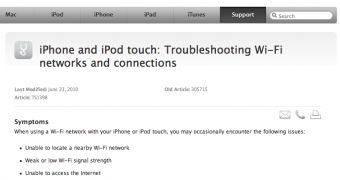Although FaceTime video calling will “just work” with most Wi-Fi networks, corporations and educational institutions may use a FireWall for increased security, blocking such kind of Internet traffic, Apple notes in a new KB article on its Support site. For those who are on a Wi-Fi network that is behind a firewall, Apple has a few tips to get them up and running with FaceTime.
The Cupertino-based electronics maker starts out by explaining what firewalls are, and why they’re needed in certain situations, saying “Frequently used by corporations and educational institutions for increased security, firewalls work by blocking certain Internet traffic from entering or leaving a network."
Apple continues in geek talk, saying that “Internet traffic moves through a firewall based on service-identification numbers that are referred to as ports. Certain ports must be open for FaceTime to work. Network administrators typically open a minimal set of network ports, allowing the traffic for approved applications to enter and leave the network while blocking other network traffic”, the company outlines.
Apple then proceeds to enumerate the ports needed open for FaceTime to work on a Wi-Fi network with a FireWall, and advises customers to contact their network administrator and show them the technical article in question. “To use FaceTime on a restricted Wi-Fi network, port forwarding must be enabled for ports 53, 80, 443, 4080, 5223, and 16393-16472 (UDP)”, the Mac maker pinpoints. “The Wi-Fi network administrator can refer to their router, firewall, or security software documentation for information on configuring port forwarding”, Apple adds. Finally, for those who encounter issues using a regular (non-blocked) Wi-Fi network, customers are linked to some basic steps for troubleshooting interference and other issues on Wi-Fi networks.
As noted earlier today, FaceTime is an open standard announced by Apple at its Worldwide Developers Conference earlier this month. Introduced alongside iPhone 4 (thanks to the addition of a front-facing camera), the feature currently requires a working Wi-Fi network and another iPhone 4. It may be possible to use FaceTime over cellular networks and between different vendors’ devices in the near future.

 14 DAY TRIAL //
14 DAY TRIAL //